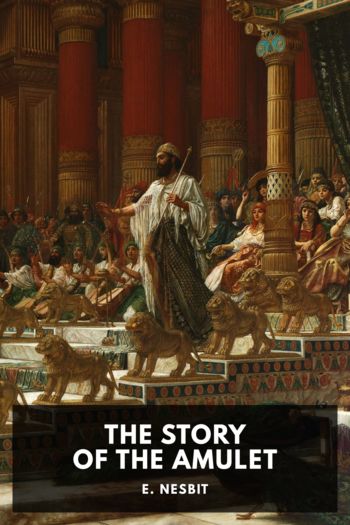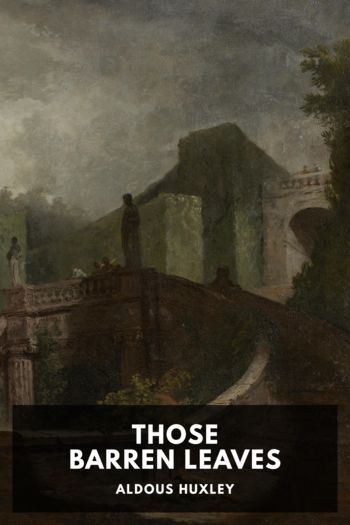WIN, Coben, Harlan [ebook and pdf reader .txt] 📗

Book online «WIN, Coben, Harlan [ebook and pdf reader .txt] 📗». Author Coben, Harlan
I have only told one person in my life that I love them. Just one.
No, I did not say it to a special woman who, say, eventually broke my heart—my heart has never been broken or even tweaked, really—but to my platonic male friend Myron Bolitar. In short, there has been no great love in my life, only a great friendship. Relatives have been the same. We are bonded in blood. I have cordial, important, and even compelling relationships with my father, my siblings, aunts, uncles, cousins. I had virtually no relationship with my mother—I didn’t see or speak to her from the time I was eight years old until I watched her die when I was in my thirties.
This is a long way of telling you that Patricia has always been my favorite relative. Even after the big rift between our fathers, which is why she hasn’t been at Lockwood since her teens. Even after the devastating tragedy that made that rift both unfixable and, alas, eternal.
When I finish my explanation, Patricia says, “You could have told me all this on the phone.”
“Yes.”
“So what else is there?”
I hesitate.
“Oh shit,” she says.
“Pardon?”
“You’re stalling, Win, which really isn’t like you…oh damn, it’s bad, right?” Cousin Patricia takes a step closer to me. “What is it?”
I just say it: “The Aunt Plum suitcase.”
“What about it?”
“The hoarder didn’t just have the Vermeer. He had the suitcase.”
* * *
We stand in silence. Cousin Patricia needs a moment. I give it to her.
“What do you mean, he had the suitcase?”
“Just that,” I say. “The suitcase was there. In the hoarder’s possessions.”
“You saw it?”
“I did.”
“And they don’t know who this hoarder is?”
“Correct. They haven’t made an identification.”
“Did you see the body?”
“I saw a photograph of his face.”
“Describe him.”
I do as she asks.
“That could be anyone,” she says when I’m done.
“I know.”
“It doesn’t matter,” Patricia says. “He always wore a ski mask. Or…or he blindfolded me.”
“I know,” I say again, this time more somberly.
The grandfather clock in the corner begins to chime. We stay silent until it finishes.
“But there’s a chance, I mean, even a likelihood…” Patricia moves toward me. We had been standing on opposite ends of the parlor. Now we are only a yard or two apart. “The same man who stole the paintings also…?”
“I wouldn’t jump to conclusions,” I say.
“What does the FBI know about the suitcase?”
“Nothing. With the monogram and crest, they’ve concluded that it’s mine.”
“You didn’t tell them—?”
I make a face. “Of course not.”
“So, wait, are you a suspect?”
I shrug.
“When they figure out the suitcase’s real significance,” Patricia begins.
“We will both be suspects, yes.”
* * *
My cousin, for those who haven’t already guessed, is the Patricia Lockwood.
You’ve probably seen her story on 60 Minutes or the like, but for those somehow not in the know, Patricia Lockwood runs the Abeona Shelters for abused and homeless girls or teens or young women or whatever the current correct terminology may be. She is the heart, the soul, the drive, and the telegenic face of one of the country’s highest-graded charities. She has deservedly won dozens of humanitarian awards.
So where to start?
I won’t go into the family split, how her father and mine had a falling-out, how the two brothers battled, how my father, Windsor the Second, won and vanquished his sibling, because, in truth, I think my father and my uncle would have eventually reconciled. Our family, like many both rich and poor, has a history of fissure and repair.
There is no bond like blood, but there is no compound as volatile either.
What stopped the potential repair was the great finalizer—death.
I will state what happened as unemotionally as possible:
Twenty-four years ago, two men in ski masks murdered my uncle Aldrich Powers Lockwood and kidnapped my eighteen-year-old cousin Patricia. For a while, there were sightings of her—a bit like with the paintings, now that I think about it—but they all led to dead ends. There was one ransom note, but it was quickly exposed as a money scam.
It was as though the earth had swallowed my cousin whole.
Five months after the kidnapping, campers near the Glen Onoko Falls heard the hysterical screams of a young woman. A few moments later, Patricia sprinted out of the woods and toward their tent.
She was naked and covered in filth.
Five. Months.
It took law enforcement a week to locate the small resin storage shed, the sort you’d buy at a chain hardware store, where Patricia had been held prisoner. The shattered manacle she’d managed to break with a rock was still on the dirt floor. So too a bucket for her waste. That was all. The shed was seven feet by seven feet, the door secured with a padlock. The exterior was forest green and thus nearly impossible to spot—a dog from the FBI’s canine unit found it.
The storage shed earned the headline “Hut of Horrors,” especially after the crime lab located DNA for nine more young women/teens/girls, ranging in age from sixteen to twenty. Only six of the bodies have been found to this day, all buried nearby.
The perpetrators were never caught. They were never identified. They simply disappeared.
Physically, Patricia seemed as okay as one could hope. Her nose and ribs had shown signs of past breakage—the abduction had been violent—but those had healed well enough. Still, it took time to recuperate. When Patricia re-engaged with the world, she did so with a vengeance. She channeled that trauma into a cause. Her passion for her fellow females, those who’d been abused and abandoned with no hope, became a living, breathing, palpable thing.
Cousin Patricia and I have never spoken about those five months.
She has never raised it, and I’m not the kind of person who invites people to open up to them.
Patricia begins to pace the parlor. “Let’s step back and try to look at this rationally.”
I wait, let her gather herself.
“When exactly was the painting stolen?”
I tell her September eighteenth and





Comments (0)